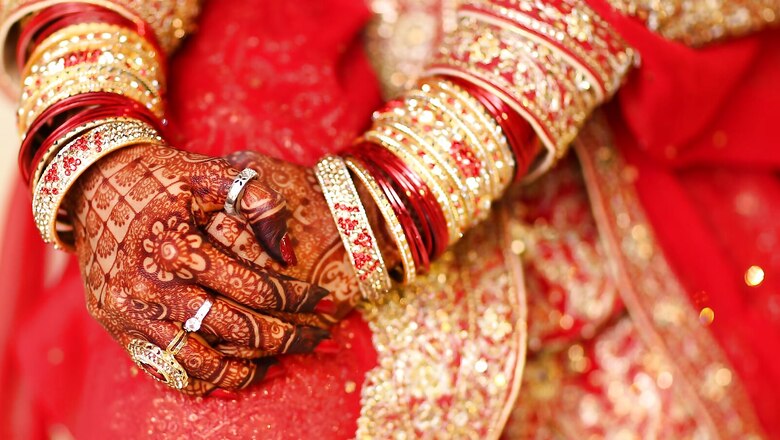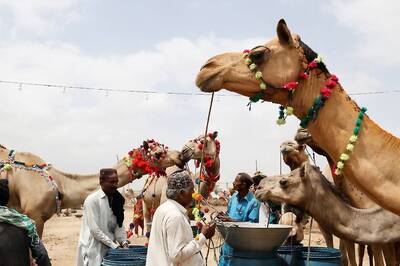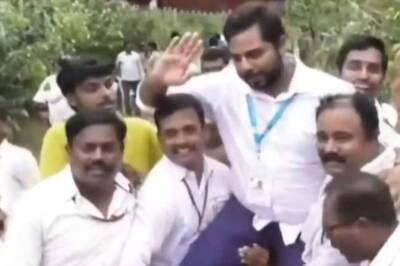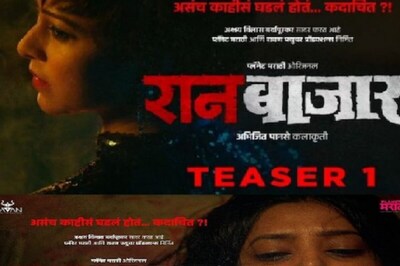
views
The welcome move of change in minimum age of marriage in India has once again trained the focus on women and the shackles they have to face in the society. It is not uncommon for women of my generation to discontinue their education because they have been married. In fact, it is almost expected of a woman to leave her studies or a job to raise her family. Increasing the minimum age of marriage for women will have a huge role in helping such women, at the very least, to complete their education.
The age of marriage was addressed for the first time through the Child Marriage Restraint Act of 1929, also known as the Sarda Act, which finalised the minimum marriageable age for girls at 14 years and for boys at 18 years. In 1978, an amendment was introduced which raised the minimum age of marriage to 18 years for girls and 21 years for boys. Later, the Prohibition of Child Marriage Act, 2006 (‘PCMA’) was enacted and the minimum marriageable age limits were revised to 18 years for girls and 21 years for boys.
An identical age limit has been followed by personal laws that govern marriages and related areas of legislation. The Hindu Marriage Act, 1955, sets a minimum age of 18 for the bride and 21 for the groom. This is the same for Christians under the Indian Christian Marriage Act, 1872 and the Special Marriage Act.
The concept of a minimum age was introduced to essentially combat the practice of child marriage. As per the Prohibition of Child Marriage Act, 2006, child marriages are illegal. Marriages below 18 years of age for the bride and 21 years of age for the groom are prohibited under such legislation.
It must be stated, however, that child marriages are illegal but not void. They are generally held to be voidable at the option of the minor party. This flexibility is kept to ensure that the rights of the minor, especially the girl, are not taken away in marital homes later on in the marriage.
Why a New Bill Now
Recently, the Union Cabinet has cleared a proposal to raise the minimum marriage age for women from 18 to 21. Subsequently, the Prohibition of Child Marriage (Amendment) Bill, 2021 was introduced in the Lok Sabha. The proposal was primarily based on recommendations delivered by the Task Force Committee (headed by Jaya Jaitly) set up by the Ministry of Women and Child Development. The task force was constituted to re-examine the age of marriage and its correlation to health and social indices. In order to properly effectuate this change, the age limit in the PCMA will have to be amended. Following such amendment, relevant provisions of personal laws would also be subjected to necessary changes.
The increase in the legal marriageable age for women is reportedly a move towards gender equality with a particular focus on health and demographic wellbeing. The legal age for marriage has been re-examined by the incumbent government for a variety of reasons, including gender-neutrality and the health and wellbeing of the underage bride.
An early age of marriage and consequent early pregnancies have a substantial impact on the nutritional levels of mothers and their children, along with their overall health and mental wellbeing. A study has demonstrated that child marriage often leads to health complications, both for the mother and the child, due to teenage pregnancy. Specifically, it was found that underage mothers are at a higher risk of reproductive health challenges, malnutrition, postpartum haemorrhage, impaired mental health and a susceptibility to sexually transmitted diseases. Thus, child pregnancies, which are predominantly a result of child marriages, adversely impact the health of the mother and the child.
Women also have to face inequalities when it comes to access to education and employment as a consequence of their early marriages. It is often the case that women are denied access to education and an economic means of livelihood after entering into the institution of marriage at an early age.
It is in consideration of these realities that the new bill for amending the legal age for marriage has been introduced. In light of the above discussion, it is relevant to analyse the effectiveness of such a change towards combating the practice of child marriage. The following section deals with such analysis.
Must Consider Social, Economic Factors
The positive aspects of such a change are primarily in relation to married women below the age of 21. Nutritional levels of mothers and their children, along with their general sense of wellbeing, are adversely affected if women have to undergo teenage pregnancy, which is a consequence of child marriage. Women will be benefitted in all these dimensions of wellbeing if the change is implemented and is successful in effecting a real tangible change in the child marriage statistics. It is expected that by making marriage of women below the age of 21 illegal, the rate of child marriages in India would decrease.
However, the ground reality differs drastically and a legislation on its own will be ineffective in changing the Indian paradigm of child marriages. In India, it is often the case that a female child is deemed to be a liability on the family. Thus, while child marriages are prohibited in India, families in rural India still consider marrying off their minor daughters to be the most feasible and economic option. Mere introduction of a legislation will not change this reality. Therefore, the legal change needs to be accompanied by a commensurate effort towards changing the social landscape of India.
While it is true that the percentage of child marriages has declined, it has been marginal: from 27 per cent in 2015-16 to 23 per cent in 2019-20, according to National Family Health Survey (NFHS)-5. This indicates that despite the fact that child marriages have been disallowed by the PCMA, they still continue to remain a prevalent social problem. Since child marriages continue to take place despite laws prohibiting them, a potential effect of this legislation would be that a vast majority of Indian women who marry, or are forced to marry, before they turn 21 would be left without the protections that a legally recognised marriage would have otherwise provided.
The issue of child marriages needs to be evaluated and addressed through a multi-dimensional approach that encompasses social, economic and demographic changes along with legal ones. Unless concerted efforts are made towards increasing women’s access to education and employment, along with their general upliftment, gender equality will continue to remain unattainable in India.
The author is senior advocate and former Additional Solicitor-General of India. The views expressed in this article are those of the author and do not represent the stand of this publication.
Read all the Latest Opinions here



















Comments
0 comment